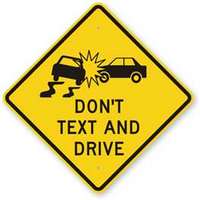New Guideline Helps States Better Collect Crash Data
 |
Broader Distracted Driving Definition Included
WASHINGTON--July 2, 2012: The Governors Highway Safety Association (GHSA) today announced that the 4th Edition of the
Model Minimum Uniform Crash Criteria (MMUCC) Guideline has been posted online at www.mmucc.us .MMUCC is a voluntary Guideline that helps states determine what data to collect at the scene of a motor vehicle crash. The Guideline will, among other things, help states better capture data for emerging issues such as distracted driving , secondary crashes and incidents on private property as well as determine the level of serious injury from motor vehicle crashes. States will be able to use federal funding authorized under the new surface transportation MAP-21 legislation to make improvements in their crash and other related data systems and come into compliance with the new MMUCC Guideline.
"Accurate data is essential for states in planning their highway safety programs and selecting countermeasures that will have the most impact in reducing crashes, serious injuries and fatalities," said Barbara Harsha, GHSA Executive Director . "States use their crash data to better assess where to invest their limited resources. MMUCC provides the tool that helps states collect the most complete, accurate and informative crash data."
"Increasing our understanding of the dangers that continue to
threaten drivers and passengers traveling on our roadways is essential to
improving traffic safety," said
Administrator David Strickland, National Highway Traffic Safety
Administration (NHTSA)
. "The new guidelines will serve as a useful tool for gathering more
accurate and consistent crash data on emerging safety issues, including
distracted driving."
The new distracted driving data element is more descriptive and includes attributes such as manually operating an electronic communications device; talking on hands-free electronic device; talking on hand-held electronic device; other activity; electronic device; passenger; other inside the vehicle (eating, personal hygiene, etc.) and outside the vehicle.
"The intent is for law enforcement to capture a wider range of information about drivers in crashes who were obviously distracted," said Harsha.
MMUCC also includes a better definition of serious injuries by breaking injuries into five logical categories and providing clear definitions for each category. The five categories include: fatal, suspected serious injury, suspected minor injury, possible injury and no apparent injury.
Including a better definition of serious injuries is intended to encourage better collection of serious injury data until such time that states can easily link electronic crash data with other electronic injury data such as EMS and hospital databases.
GHSA and NHTSA co-managed the update process which was underwritten with funding from NHTSA. GHSA and NHTSA sought comments online and at meetings and have used those comments to update this final version of the Guideline.
A MMUCC Expert Panel consisting of state and local law enforcement officials, state traffic records coordinators, state department of transportation representatives, state health officials, members of the research community and officials from five federal agencies helped GHSA and NHTSA oversee the effort to update the 3rd Edition of MMUCC to make this resource the best it can be for safety stakeholders across the country.
For distracted driving resources and laws, visit: GHSA Distrated Driving .


